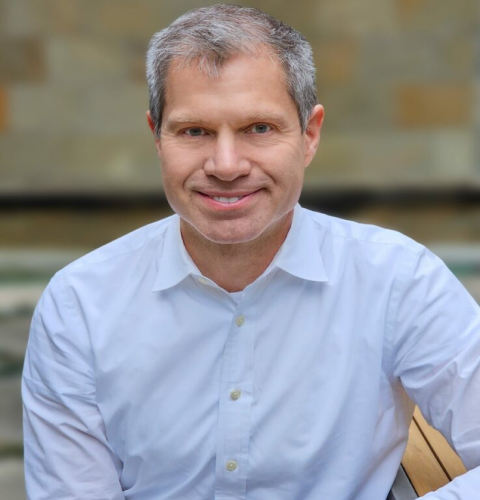Acupuncture, an ancient practice rooted in Traditional Chinese Medicine (TCM), has a rich history that spans thousands of years. While most people associate acupuncture with China, its journey through Europe and into the United States is a story of cultural exchange, skepticism, and eventual acceptance.
In this blog post, we’ll explore the historical milestones that brought acupuncture to the West, its rise in modern medical treatments, and its enduring relevance today.
The Early Days: Acupuncture’s Introduction to Europe
The story of acupuncture in Europe begins in the 16th century. During the Age of Exploration, the Dutch East India Company was pursuing merchant trading in China and Japan. As they returned to Europe, they brought with them knowledge of acupuncture practices, sparking interest in this mysterious therapy.
In the early 1600s, Portuguese explorer Ferdinand Mendes Pinto wrote a book titled The Pilgrimage of Ferdinand Mendes Pinto. Published in 1646, this book offered the first glimpse of acupuncture in European literature, describing it as part of Japanese medical treatment. It was later translated into several languages, including English in 1663, helping to spread awareness of acupuncture across Europe.
Another significant work that shaped the understanding of acupuncture in the West was The Secrets of Chinese Medicine, written by a Jesuit missionary in Canton, China. Published in France in 1671, it provided an early monograph on acupuncture and was later translated into English in 1707. Through these early writings, acupuncture began to slowly take root in European medical discourse.
The Contributions of Engelbert Kaempfer and Other Pioneers
One of the most important figures in introducing acupuncture to the West was Engelbert Kaempfer, a German physician and naturalist who traveled extensively in Japan, Russia, and Southeast Asia. In 1712, Kaempfer wrote about acupuncture in his book The Fascination of the Beloved, describing its effectiveness in treating conditions like colic and arthritis.
Kaempfer’s work marked a significant moment in the West’s understanding of acupuncture, although skepticism still persisted among many European physicians.
By the late 18th century, Napoleon’s military campaigns also contributed to the spread of acupuncture knowledge. In 1798, when Napoleon invaded Egypt, his chief physician noted the use of acupuncture-like devices to treat battlefield injuries, further piquing European interest in this form of therapy.
Acupuncture in America: Early Attempts at Acceptance
While acupuncture was slowly gaining recognition in Europe, its introduction to the United States was a much slower process. In the 19th century, several prominent physicians began advocating for acupuncture’s use in pain management. Dr. William Markley Lee, a South Carolina physician, wrote articles in the Southern Medical and Surgical Journal in 1836, recommending acupuncture for pain relief and rheumatism.
His endorsement reflected growing interest in the therapy, but it was overshadowed by the rise of Western medicine and the onset of the Civil War.
During this time, another significant development occurred. A German physician named Philipp von Siebold, who had spent time in Japan, is credited with inventing the modern hypodermic needle. Inspired by acupuncture, Siebold proposed using hollow needles to inject medicine directly into the body, laying the groundwork for one of the most important tools in modern medical treatments.
The Modern Resurgence: Acupuncture in the 20th Century
Acupuncture’s real breakthrough in the United States came in the 20th century, largely due to a series of events in the 1970s. In 1972, during President Richard Nixon’s visit to China, journalist James Reston underwent an emergency appendectomy while in Beijing.
Following the surgery, Reston experienced significant pain relief through acupuncture, which he later wrote about in an article for The New York Times. This high-profile endorsement helped catalyze a resurgence of interest in acupuncture in the United States.
Shortly after, a U.S. Air Force physician wrote an article about acupuncture in Reader’s Digest, further contributing to its popularity. By the mid-1970s, acupuncture was no longer a fringe therapy in the U.S. but had gained recognition as a legitimate form of medical treatment, particularly for pain management.
Acupuncture Today: A Tool for Modern Healing
Despite its ancient origins, acupuncture continues to be a widely used and respected therapy around the world. In many places, including China and Japan, acupuncture is integrated into the healthcare system, with practitioners using it alongside other forms of treatment.
In the U.S., acupuncture has become increasingly common, with more and more people turning to it for pain relief, stress management, and overall well-being.
At Metro Acupuncture in Atlanta, Georgia, we are proud to continue the tradition of this ancient healing practice, offering acupuncture treatments designed to improve your health and vitality. Whether you’re seeking relief from chronic pain, stress, or other conditions, acupuncture remains a proven and effective tool for restoring balance and harmony to the body.
Learn more about acupuncture at https://metroacupuncture.com/.
Conclusion: A Timeless Tradition
Acupuncture’s journey from ancient China to the modern world has been a fascinating one, shaped by brave individuals, cultural exchanges, and the evolving understanding of medicine. Today, acupuncture stands as a testament to the enduring wisdom of Traditional Chinese Medicine, offering people around the world a natural and effective way to enhance their health.
As we continue to integrate acupuncture into modern healthcare, its value remains as relevant as ever.For a deeper dive into the practice of acupuncture and its benefits, we recommend reading more about the history of acupuncture on https://nccih.nih.gov/.
-
Mark A. Lewinter, DACM, L.Ac. has a Doctor of Acupuncture and Chinese Medicine degree from Pacific College of Health and Science and a Master of Science degree in Oriental Medicine from Southwest Acupuncture College. His interest in studying East Asian Medicine started at age thirteen when he was diagnosed with cancer. While undergoing chemotherapy, he also incorporated alternative medicine to facilitate his recovery.
View all posts
